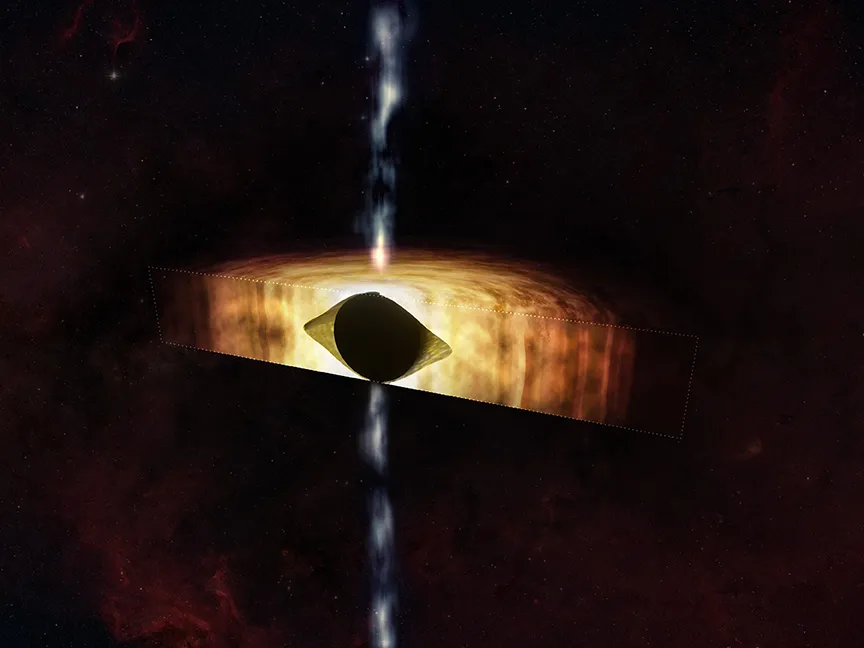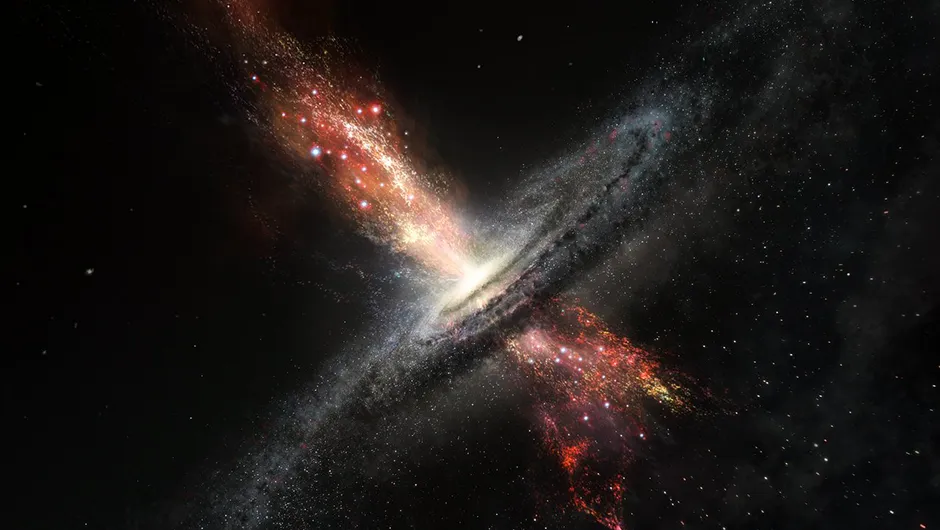The supermassive black hole at the centre of our Galaxy is spinning so fast, it is warping spacetime, according to a new study.
This warping of spacetime is causing the black hole to appear as though shaped like a rugby ball.
The study follows observations of our central supermassive black hole using NASA’s Chandra X-ray Observatory and the NSF’s Karl G. Jansky Very Large Array (VLA).

Understanding supermassive black holes
Astronomers now believe that most large galaxies have a supermassive black hole at their centre, and our Milky Way galaxy is no different.
Our central black hole, known as Sagittarius A* (Sgr A), is about 4 million times the mass of the Sun.
Astronomers look at supermassive black holes' mass and spin to learn more about them and how they behave.
In the past, studies of Sagittarius A have come to to different conclusions, ranging from it not spinning at all, to it spinning at the maximum possible rate.
The researchers behind this latest study used x-ray and radio data to determine how material is flowing away from the black hole.
They concluded Sgr A* is spinning with an angular velocity about 60% of the maximum possible value, and an angular momentum about 90% of the maximum possible value.

What the study found out
The artist's illustration accompanying the study shows how spacetime surrounding the black hole is shaped like a rugby ball (or American football, as the authors describe it).
The yellow-hued material represents gas swirling around Sagittarius A* that falls into the black hole, beyond the event horizon.
The area inside the oval shape but outside the event horizon is depicted as a cavity.
Blue blobs represent jets of material shooting away from the the poles of the spinning black hole.

Spinning supermassive black holes generate outflows of material such as jets, which means there needs to be matter near the black hole for these outflows to occur.
Sgr A* has been quiet over the past few millennia, but this could change if the amount of material near the black hole increases.
To calculate the spin of our galaxy's supermassive black hole, the study authors used a technique known as the 'outflow method' that looks at the relationship between the spin of the black hole and its mass, the properties of the matter near the black hole, and the outflow properties.
The paper describing these results led by Ruth Daly (Penn State University) is published in the January 2024 issue of the Monthly Notices of the Royal Astronomical Society and can be found here.
The other authors are Biny Sebastian (University of Manitoba, Canada), Megan Donahue (Michigan State University), Christopher O’Dea (University of Manitoba), Daryl Haggard (McGill University) and Anan Lu (McGill University).
